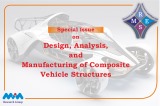Research Article
Comprehensive analysis of specimen’s properties and fiber type on the performance of Indian origin fine aggregates-based composite
Muppalla Venkata Sai Surya Pratap Chowdary1, SS. Asadi1, C. Raveendra Reddy2
1Department of Civil Engineering, Vignan’s Foundation for Science, Technology and Research (Deemed to be University), Vadlamudi-522213, India
2Department of S&H, NBKR Institute of Science and Technology (Autonomous), Gudali-524413, India
Keywords
Abstract
Engineered cementitious composite;
Mechanical characteristics;
River and manufactured sand;
Polyvinyl alcohol;
Sisal fibers;
Properties of the specimen
A versatile concept in the field of Engineered Cementitious Composite (ECC) is Eco-friendly ECC. The materials and properties of specimens will influence the characteristics. In this present study, locally available fine aggregates (50% River sand + 50% M-Sand (16.33160 N, 80.35140 E)) and 2% PVA fibers-based Mix-1, local sand and sisal fibers based Mix-2 (1% sisal fibers + 1% PVA fibers) are considered. The flowability is slightly reduced from Mix-1 to Mix-2. All considered mixes showed good self-consolidation properties (Deformability factor (D.F.) <2.75 based on Li, 2008). For analysis of the mechanical characteristics, different specimens are considered. The compressive and flexural properties negligibly reduced by the size of specimens. But compressive strength moderately reduced by shape (cube to cylindrical specimens). The compressive ratio is between 1.45 to 1.6. The split tensile properties are moderately reduced with the size specimens. All these mechanical characteristics are slightly reduced by the usage of sisal fibres. To determine the durability properties, Rapid chloride penetration (RCPT) test conducted. However, these properties also negligibly influenced by the sisal fibres. It indicates that the sisal fibres can be used for the partial replacement of PVA fibres in the local sand-based mixes. To analyse this, SEM and XRD analysis conducted. Their performance also validated based on Roychand et al, 2016. The hydration of particles and arrangement of fibres are responsible for the significant performance of this Eco-friendly ECC.
© 2022 MIM Research Group. All rights reserved.


